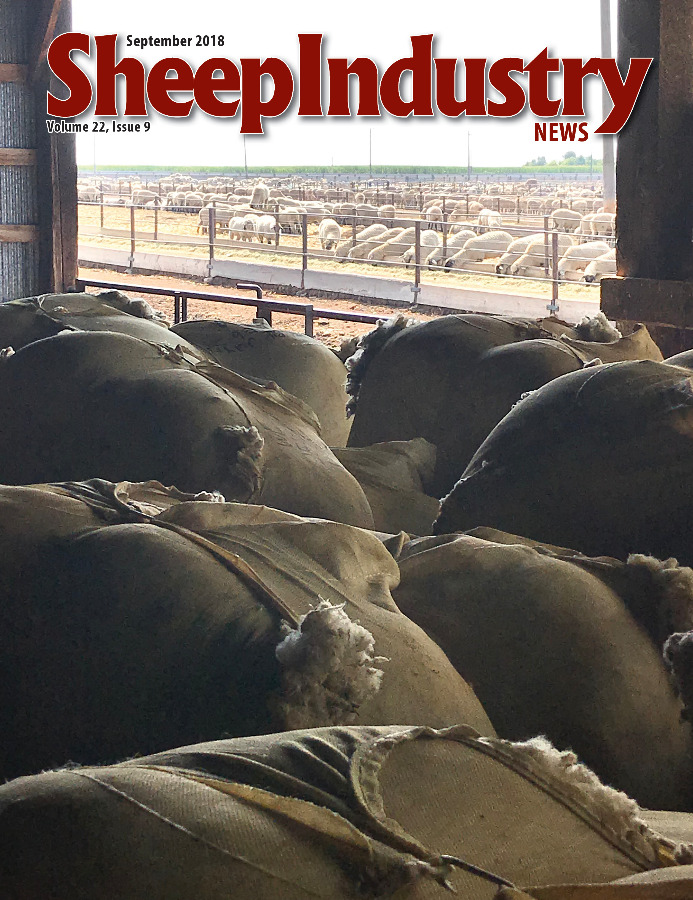
- September 2018
- President’s Notes
- Call to Action on the Farm Bill
- Budget Takes Center Stage at Executive Board Meeting
- Built from Scratch: Rosehill Lamb
- ASI Looking at Wool Balers
- Chad Page Earns Sheep Heritage Scholarship
- ASI YE Summer Tour
- Around the States
- Market Report
- PLC Celebrates 50th Anniversary
- The Last Word
PLC Celebrates 50th Anniversary in 2018
For fifty years, the Public Lands Council has been America’s only organization dedicated solely to advocating for ranchers with federal grazing permits. The group’s presence – a constant voice on the steps of Capitol Hill – arose from the minds of key leaders from the West.
The story began decades ago at the Old Ebbit Grill, a Washington, D.C., staple tucked away just east of the White House. Gene Etchart and Floyd Lee discussed the need for a centralized voice representing public lands ranchers. They were onto something. As they shared their ideas with others, state cattle and sheep organizations jumped on board, and by Aug. 6, 1968, the Public Lands Council was officially incorporated. ASI is a longtime PLC member, as well.
The formation of PLC was an act of great prudence. Soon after PLC formed, the regulatory environment surrounding federal lands entered a period of serious upheaval. In 1970, the National Environmental Policy Act was implemented, requiring federal agencies to assess impacts of their land-management actions on the environment. Other wildlife legislation came into play in the 1970s, including the Endangered Species Act and the Wild Free-Roaming Horse and Burro Act. By 1976, debate around federal lands shifted even more, and traditional homestead laws were no longer recognized. They were replaced with the modern ideas of “multiple use” and sustained yield, enshrined in the Federal Land Policy Management Act.
Environmental activists added extra pressure to an already strict regulatory climate. By the 1990s, these groups had grown in popularity, and served as a voice against traditional livestock production. The mantra “cattle free by ‘93” echoed across the United States, referencing a growing movement to end grazing on federal lands. This pressure coincided with the Clinton administration, where, under Interior Secretary Bruce Babbitt, the Department of the Interior made regulatory changes that plague the industry to this day.
Public lands ranchers have come a long way since the Babbitt years, but regulatory and social pressures continue to impact the livestock industry. Many allotments sit vacant, unable to be used in the face of rigorous NEPA processing and backlogs. Now, more than ever, ranchers are the target of litigious environmental groups who exploit federal regulations to target the ranching way of life. These realities forced ranchers out of business and have made survival a struggle for many.
The hard-times faced by the industry are disheartening to some. But for others, the resilience of the livestock industry is a story of hope. Commitment to pass down the operation to the next generation is a driving force that unites ranchers big and small. It is this commitment that encourages their engagement in organizations such as PLC, and this commitment that fuels the drive to fight for the industry on Capitol Hill.
The needs of public lands ranchers are quite different than that of traditional livestock producers. Public lands ranchers need certainty, a luxury that allows private operations to plan long-term. They need credit for their important role in land management. And they need the autonomy to make decisions that benefit natural resources.
This month, PLC will gather in Park City, Utah, at its Annual Meeting to review policy, goals and initiatives for the next year. The gathering will celebrate the organization’s 50th anniversary. However, the focus is not only on the past, but the future. The years ahead have the promise of hope for ranchers, and today’s administration has the potential to help achieve the necessary changes for the industry.
To learn more about the PLC Annual Meeting and 50th Anniversary Celebration, visit PublicLandsCouncil.org.

